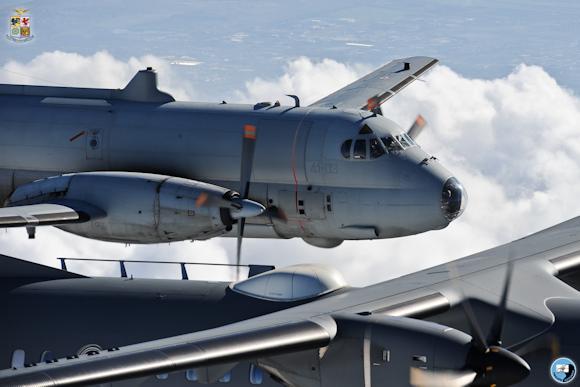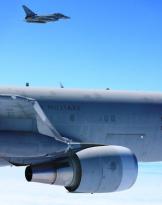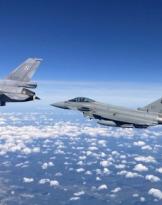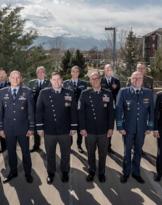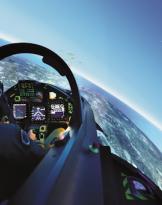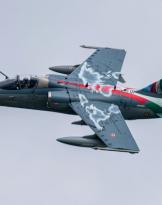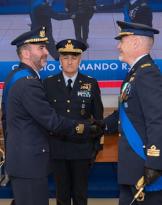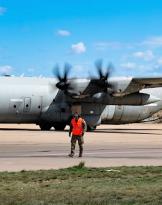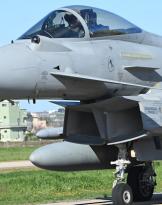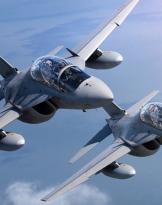Wednesday 22 November 2017, the aircraft Atlantic he carried out his last flying activity from Sigonella to Pratica di Mare after more than 45 years serving the country, under the flags of the Italian Air Force (AM) and the Navy (MM). During the "cold war", the aircraft contributed decisively to the maintenance of peace in the geo-political scenario in which Italy was inserted.
The first Atlantic "Italian" aircraft came to Sigonella in the afternoon of 27 June 1972.
Atlantic, also known as "Submarine Hunter", is one of the largest AM flight aircrafts, almost 260 thousands accumulated by a fleet of 18 specimens. The activity carried out was a combination of efficiency and efficiency,Atlantic, the first intruder weapon system, an absolutely reliable aircraft with uncommon operational capabilities, holding the title of the first and only aircraft designed, designed and used solely for the "Antisom" activity.
All the personnel of the 41st Wing, of the 11th Aircraft Maintenance Department and of Sigonella Airport, which for many years has operated on the aircraft, wanted to greet the 'Atlantic who made the last take-off from the Sicilian base at 12,21 with intermediate destination the Pratica di Mare Airport, from where the airplane will continue its journey - by land - in the direction of Vigna di Valle for the deserved location at the inside the Historical Museum of the Air Force. For some, it is also a moment of emotion for that “Father of the Family” who in 45 years has always brought everyone home, without any tribute of human or material life.
Atlantic is an aircraft that has operated with 13 unit crews with the peculiarity of being formed by officers and non-commanding aircraft operators belonging to both the AM and MM. One of the main features of the aircraft is the ability to stay in flight above any other analog aircraft, reaching the record of 19 hours and 20 minutes without any refueling.
The 45 years of activity have seen the aircraft operate on Mediterranean waters in defense of our national borders, but also in many international missions participating in numerous editions of the major NATO and non-exercises: from Dawn Patrol of 1973 to Dynamic Manta of today, passing for various Display Determination, Dog Fish, Warm Wind, Daily Double, Open Sea, Trident, Deterrent Force, Passex, Storm Two, Fleetex, Sharp Guard, Destined Glory, Tapoon. Atlantic has touched prestigious destinations such as the North Pole in 1997, all of the major European Military Airports to Iceland and still impressive transoceanic and global destinations in general (India, Morocco, Canada, Greenland, Egypt, Lebanon, United Arab Emirates, etc).
Last but not least, the activity that ensured oceanic SAR support for the F-35 aircraft, during the transfer flight to the Luke-Arizona Pilot Training Center in the USA. On the occasion, the Atlantic, which took off on 20 September 2016 from the Sicilian airport to Portsmouth (USA), traveled about 8000 miles and flew for more than 30 hours in total.
For some years the transition phase to the new weapon system had already begun for the 41 ° Stormo: the ATR-72 aircraft in the militarized "maritime patrol" P-72A version, which arrived in Sigonella on 25 November 2016.
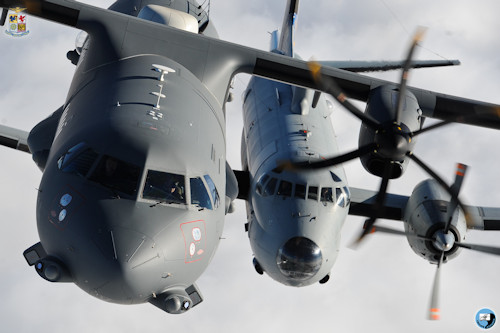 After the round of honor on the slopes, along the coasts of Siracusa and Catania and Etna,Atlantic escorted by the P72 has touched the soil of Pratica di Mare at 16,19. In place of piloting the commander of the 41 ° Stormo, Colonel Francesco Frare, and the captain of the frigate Salvatore Ferrara. To welcome theAtlantic and his last crew the commander of the Forces of Support and Specials - general of air division Gianpaolo Miniscalco, the Commander of the Experimental Center of Flight - cgeneral of air division Fabio Molteni, the Inspector of the Aviation for the Navy - air brigade general Amedeo Magnani, the commander of the Airport of Pratica di Mare, air brigadier general Roberto Preo.
After the round of honor on the slopes, along the coasts of Siracusa and Catania and Etna,Atlantic escorted by the P72 has touched the soil of Pratica di Mare at 16,19. In place of piloting the commander of the 41 ° Stormo, Colonel Francesco Frare, and the captain of the frigate Salvatore Ferrara. To welcome theAtlantic and his last crew the commander of the Forces of Support and Specials - general of air division Gianpaolo Miniscalco, the Commander of the Experimental Center of Flight - cgeneral of air division Fabio Molteni, the Inspector of the Aviation for the Navy - air brigade general Amedeo Magnani, the commander of the Airport of Pratica di Mare, air brigadier general Roberto Preo.
The 41 ° Stormo Antisom of Sigonella, hierarchically dependent on the Office of the Marine Aviation Inspectorate, guarantees its primary mission to counter the underwater and naval threat and to provide SAR and sea search service at sea long-range, keeping underwater, potentially hostile submarine and naval units under the control of the main maritime routes. It also provides control of merchant traffic in the context of operations against international terrorism and support for illegal immigration flows control activities from the southern Mediterranean quadrants, ensuring day-to-day coverage of large sea areas of interest, timely localization of refugees at sea and constant SAR intervention in the event of a maritime offense and / or shipwreck.
Il Airport Command of Sigonella, hierarchically dependent on the Support and Special Forces Command of the AM, has the task of providing operational, technical, logistical and administrative support to the bodies and departments in risk and in transit on the homonymous air base, ensuring without interruption the services necessary for the safe and effective performance of the flight activities , which include among others technical ground assistance, refueling, meteorological service, fire service, health care, the availability of recreational facilities and housing. Furthermore, it is responsible for the provision of air traffic services within the control area (CTR) called "Catania", which includes the skies of eastern Sicily and adjacent seas, including the Sigonella Military Airport and the Catania civilian ones. Fontanarossa and Comiso (RG).
 Aircraft "Breguet BR-1150 Atlantic (P-1150A) ", an" all-weather "patrol bait produced in Europe and destined principally for the discovery, tracing and neutralization of submarines and secondarily to maritime reconnaissance in general, capable of carrying out missions linked to the anti-submarine fight those relating to Surveillance Surface. Other uses include search and rescue, sea surface surveillance, photographic and electronic reconnaissance, mining and transportation.
Aircraft "Breguet BR-1150 Atlantic (P-1150A) ", an" all-weather "patrol bait produced in Europe and destined principally for the discovery, tracing and neutralization of submarines and secondarily to maritime reconnaissance in general, capable of carrying out missions linked to the anti-submarine fight those relating to Surveillance Surface. Other uses include search and rescue, sea surface surveillance, photographic and electronic reconnaissance, mining and transportation.
It was chosen after a careful and prolonged selection of different aircraft of the same specialty, by virtue of its wide range of navigation instruments, discovery and localization of submersibles sailing in immersion, the aircraft proved immediately to the optimum of the most modern techniques in matter and its armament the most effective among those available because it is able to autonomously conduct systematic researches throughout the Mediterranean area.
Atlantic's aptitude to operate autonomously or in support of complex air and naval forces has allowed - in a natural way - to adapt and make itself available to different types of employment as the international scenario changes. Thus, while maintaining all its peculiarities and capabilities, over time, it has passed from a mainly anti-submarine and anti-ship activity, typical of the "cold war", to an activity of merchant traffic control, patrol and optical and electronic reconnaissance areas of interest, also in the context of operations against international terrorism, as well as an activity aimed at controlling the flows of illegal immigration from the southern quadrants of the Mediterranean, guaranteeing the daily coverage of large sea areas of interest , allowing the timely localization of refugees at sea and alerting the bodies in charge and at the same time guaranteeing constant and emergency SAR (search and rescue) intervention in the event of a maritime accident and their sinking. All this is to be ascribed solely to the peculiar abilities of the Atlantic aircraft in terms of autonomy, aptitude for flying at very low altitudes and the availability of multiple sensors and communication devices that allow it to easily patrol very large areas otherwise not explorable except with the use of numerous other naval and air vehicles.
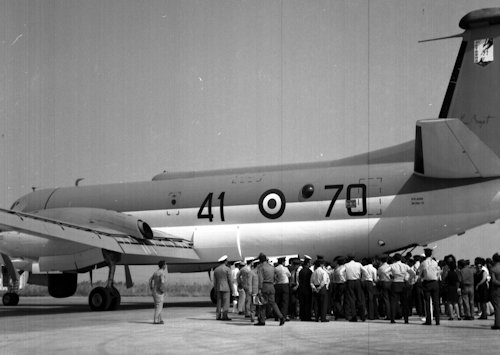 The first of the 18 "Atlantic" for departments Antisom was delivered to the 88 ° Flight Group of the 41 ° Stormo, in Toulouse, France, on 27 June 1972. On the same day, after a stop in Nimes, always in France, he flew to Sigonella where, exactly at 16,25 hours, he first contacted the Sicily airport track. Of these 18 aircraft, 9 came to the 41 ° Stormo and 9 at the 30 ° Flock of Cagliari Elmas. The 1 ° August 2002, with the dissolution of the 30 ° Stormo, the Component was merged within the 41 ° Stormo.
The first of the 18 "Atlantic" for departments Antisom was delivered to the 88 ° Flight Group of the 41 ° Stormo, in Toulouse, France, on 27 June 1972. On the same day, after a stop in Nimes, always in France, he flew to Sigonella where, exactly at 16,25 hours, he first contacted the Sicily airport track. Of these 18 aircraft, 9 came to the 41 ° Stormo and 9 at the 30 ° Flock of Cagliari Elmas. The 1 ° August 2002, with the dissolution of the 30 ° Stormo, the Component was merged within the 41 ° Stormo.
Thanks to the activity carried out in the 'Atlantic, the 28 March 2007, the president of the republic penned on the flag of 41 ° Stormo Antisom the silver medal for civil merit as an acknowledgment for meritorious and incessant works to protect maritime traffic and the search and rescue of refugees and shipwrecks in the Mediterranean area. This last medal has been added to the previous two for the military valor (of 1940 and 1940-41) becoming the flag of the 41 ° Formo one of the most decorated of AM.


